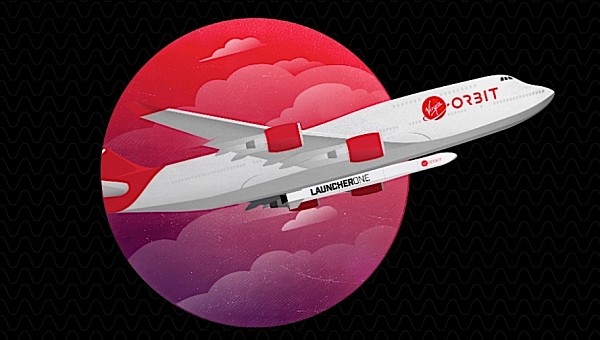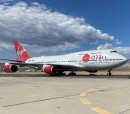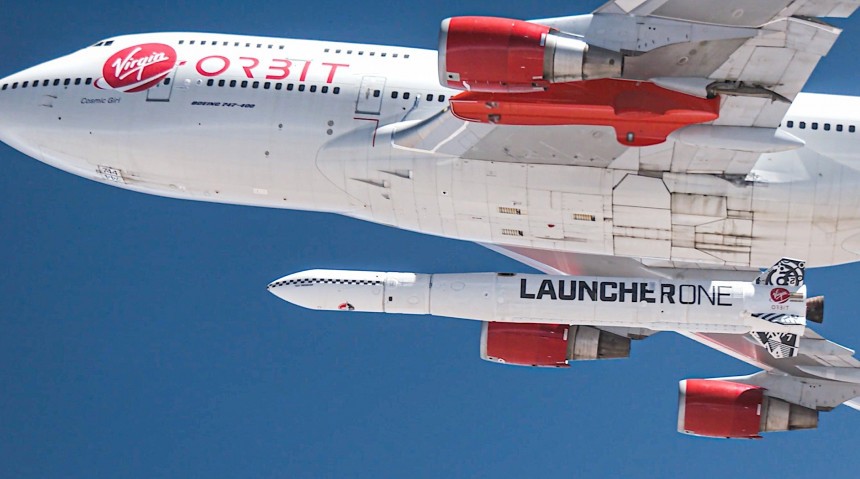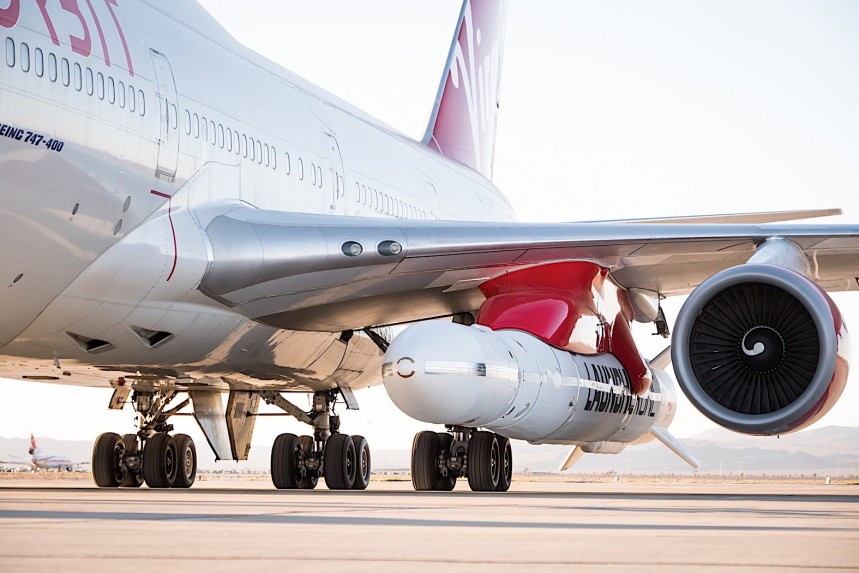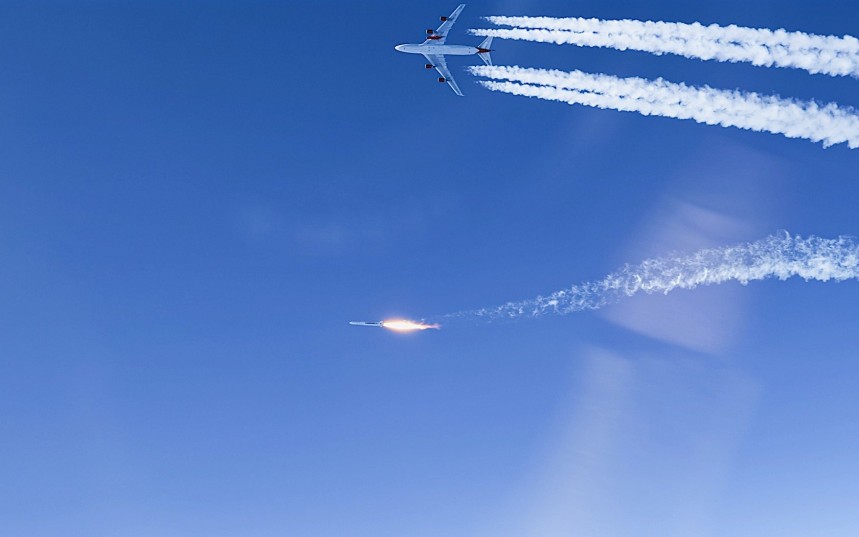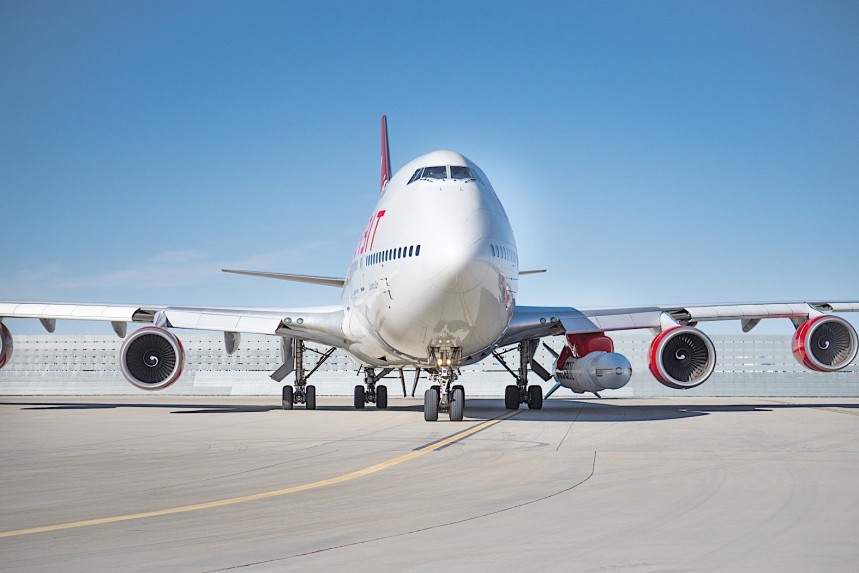Ever since space exploration became a thing back in the 1960s, rocket launches have generally been performed using something that shoots upwards from a launch pad. Because the method was extensively used over the past decades, it became synonymous with space exploration.
Sending hardware and even humans beyond the borders of our own planet will probably forever require vertical launches, because of the immense amount of power needed in some cases. But as some Virgin companies have proven, closer destinations like the immediate orbits or the Karman line, the largely agreed limit to space, can be reached with horizontally-launched machines as well.
In July 2021, Virgin’s founder Richard Branson took a seat alongside other non-astronauts in the VSS Unity spaceship. It was attached to SpaceShipTwo, a carrier plane that departed from a runway just to shoot the Unity from between its two fuselages and hurtle it horizontally to space. The flight was a success, and that proved once and for all you can reach space even if your ship does not leave a launch pad.
Virgin Galactic didn’t get to make any money from launching paying customers into space. Aside from that inaugural flight, it didn’t fly again, at least so far, so the 400 flights per year announced in 2022 seem waaaay far-fetched.
The other space company Branson owns, Virgin Orbit, seems to have found a successful recipe for launching custom cargo to orbit, though. Using a modified Boeing 747 called Cosmic Girl and a rocket named LauncherOne that attaches under one of the plane’s wings, Orbit delivered on its promises five times already, placing in the void around our planet several pieces of hardware for various customers.
All five missions were conducted from the company’s base at the Mojave Air and Spaceport in California, but as we stepped into 2023, Virgin moved to Spaceport Cornwall in the UK. The mission, called Start Me Up, in honor of the 1980s Rolling Stones hit by the same name, was to be the country’s first-ever orbital launch, Western Europe’s first commercial one, and Virgin’s first international launch.
It failed. Cosmic Girl departed the runway, climbed to the set altitude, and released LauncherOne. The rocket ascended past the Karman line, but the second stage, after igniting successfully, cut off much sooner than expected. The rocket and its cargo failed to reach orbit and came back down, burning, over the Canary Islands.
The reasons for the early shut-off of the rocket are under investigation, and until they’re made public, we decided it’s time to have a closer look at Virgin’s way of launching space missions without using a launch pad. And as you’ll see, the process is much simpler than you'd think, and potentially game-changing.
CARGO
It all starts with finding someone in need of a ride to space (or that someone finding Virgin). A contract is signed, payment is made, and we’re off.
Whatever cargo needs to be transported beyond the atmosphere needs to be shipped to Long Beach, California, where Virgin Orbit operates its payload processing facility. It’s an important piece of real estate, because it’s here where the ISO 8 Cleanliness standard cleanroom is located.
You see, things sent to space need to be squeaky clean to operate properly. A cleanroom ensures there is not a single particle above the agreed limit (as per ISO 8, that would be a maximum of 100,000 particles per cubic foot of interior air), but also the right temperature and humidity for the cargo.
Depending on the size and shape of the product, mating it to an adaptor is needed, so the rocket can accommodate its load. The adapter goes into something called a clamshell payload fairing. That’s the element that opens up and releases the cargo during the flight. The fairing is then connected to electric, ordnance, and radio systems.
With these operations out of the way, the fairing is to be shipped to the launch site, where the rest of LauncherOne awaits. The rocket and its payload are mated together, and finally, the entire assembly goes onto the left wing of the Cosmic Girl, attached to a pylon.
THE BIG RED BUTTON
There’s nothing particularly complicated or spectacular in what comes next. On launch day, the plane accelerates down the runway, rotates (in aviation terms, that means raising the nose to take the plane off the ground), and sets course for the location chosen for separation. Depending on the desired orbital trajectory, the Boeing can stay airborne anywhere between 30 minutes and four hours. Generally, the altitude considered best for separation is 35,000 feet (10 km).
When the moment is right, the plane’s pilot releases the rocket. He does that by pressing a button Virgin dramatically nicknamed Big Red Button because, well, it’s big and red.
The rocket launches in a fashion similar to what you can see when a fighter jet fires a missile. Angled, plane and all, at 27 degrees toward the sky at the moment of release, it freefalls for about 4 seconds to make sure there’s enough distance between it and the carrier when the first stage engine ignites.
LauncherOne’s first-stage engine is called NewtonThree, and it burns with enough power to shoot the rocket to 8,000 mph (12,800 kph). It burns out quickly and detaches. By the time this happens, the rocket is already at an altitude of anywhere between 310 and 745 miles (500 to 1,200 km), depending on the mission profile.
It’s now when the second stage engine, called NewtonFour, kicks in, trying to place the cargo on the desired orbit. The fairing opens and the second stage ejects, placing the satellite where it needs to be. Now floating aimlessly in space, the second stage will eventually be pulled back down to Earth and will burn in the planet’s atmosphere.
And that’s about it. It seems a lot simpler than having to move a rocket to the pad, fuel its massive tanks, send sparks to ignite it all, and hope it doesn’t blow up. Then, why aren’t more companies doing it?
Perhaps the simplest answer is the fact such a method only works for relatively small cargo. LauncherOne, for instance, can carry only 500 kg (1,100 pounds) to equatorial orbit, and just 300 kg (661 kg) to heliosynchronous orbit.
So no, horizontal launches will probably not become mainstream for the larger space exploration industry, but they will more than likely significantly increase the number of small satellites that spin around our ball of rock.
In July 2021, Virgin’s founder Richard Branson took a seat alongside other non-astronauts in the VSS Unity spaceship. It was attached to SpaceShipTwo, a carrier plane that departed from a runway just to shoot the Unity from between its two fuselages and hurtle it horizontally to space. The flight was a success, and that proved once and for all you can reach space even if your ship does not leave a launch pad.
Virgin Galactic didn’t get to make any money from launching paying customers into space. Aside from that inaugural flight, it didn’t fly again, at least so far, so the 400 flights per year announced in 2022 seem waaaay far-fetched.
The other space company Branson owns, Virgin Orbit, seems to have found a successful recipe for launching custom cargo to orbit, though. Using a modified Boeing 747 called Cosmic Girl and a rocket named LauncherOne that attaches under one of the plane’s wings, Orbit delivered on its promises five times already, placing in the void around our planet several pieces of hardware for various customers.
It failed. Cosmic Girl departed the runway, climbed to the set altitude, and released LauncherOne. The rocket ascended past the Karman line, but the second stage, after igniting successfully, cut off much sooner than expected. The rocket and its cargo failed to reach orbit and came back down, burning, over the Canary Islands.
The reasons for the early shut-off of the rocket are under investigation, and until they’re made public, we decided it’s time to have a closer look at Virgin’s way of launching space missions without using a launch pad. And as you’ll see, the process is much simpler than you'd think, and potentially game-changing.
CARGO
It all starts with finding someone in need of a ride to space (or that someone finding Virgin). A contract is signed, payment is made, and we’re off.
You see, things sent to space need to be squeaky clean to operate properly. A cleanroom ensures there is not a single particle above the agreed limit (as per ISO 8, that would be a maximum of 100,000 particles per cubic foot of interior air), but also the right temperature and humidity for the cargo.
Depending on the size and shape of the product, mating it to an adaptor is needed, so the rocket can accommodate its load. The adapter goes into something called a clamshell payload fairing. That’s the element that opens up and releases the cargo during the flight. The fairing is then connected to electric, ordnance, and radio systems.
With these operations out of the way, the fairing is to be shipped to the launch site, where the rest of LauncherOne awaits. The rocket and its payload are mated together, and finally, the entire assembly goes onto the left wing of the Cosmic Girl, attached to a pylon.
THE BIG RED BUTTON
When the moment is right, the plane’s pilot releases the rocket. He does that by pressing a button Virgin dramatically nicknamed Big Red Button because, well, it’s big and red.
The rocket launches in a fashion similar to what you can see when a fighter jet fires a missile. Angled, plane and all, at 27 degrees toward the sky at the moment of release, it freefalls for about 4 seconds to make sure there’s enough distance between it and the carrier when the first stage engine ignites.
LauncherOne’s first-stage engine is called NewtonThree, and it burns with enough power to shoot the rocket to 8,000 mph (12,800 kph). It burns out quickly and detaches. By the time this happens, the rocket is already at an altitude of anywhere between 310 and 745 miles (500 to 1,200 km), depending on the mission profile.
And that’s about it. It seems a lot simpler than having to move a rocket to the pad, fuel its massive tanks, send sparks to ignite it all, and hope it doesn’t blow up. Then, why aren’t more companies doing it?
Perhaps the simplest answer is the fact such a method only works for relatively small cargo. LauncherOne, for instance, can carry only 500 kg (1,100 pounds) to equatorial orbit, and just 300 kg (661 kg) to heliosynchronous orbit.
So no, horizontal launches will probably not become mainstream for the larger space exploration industry, but they will more than likely significantly increase the number of small satellites that spin around our ball of rock.
